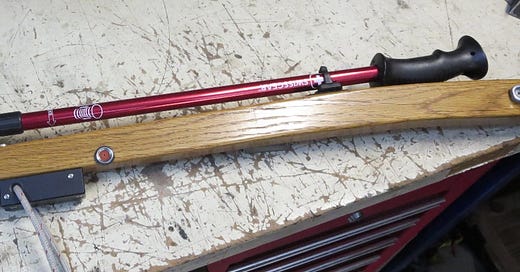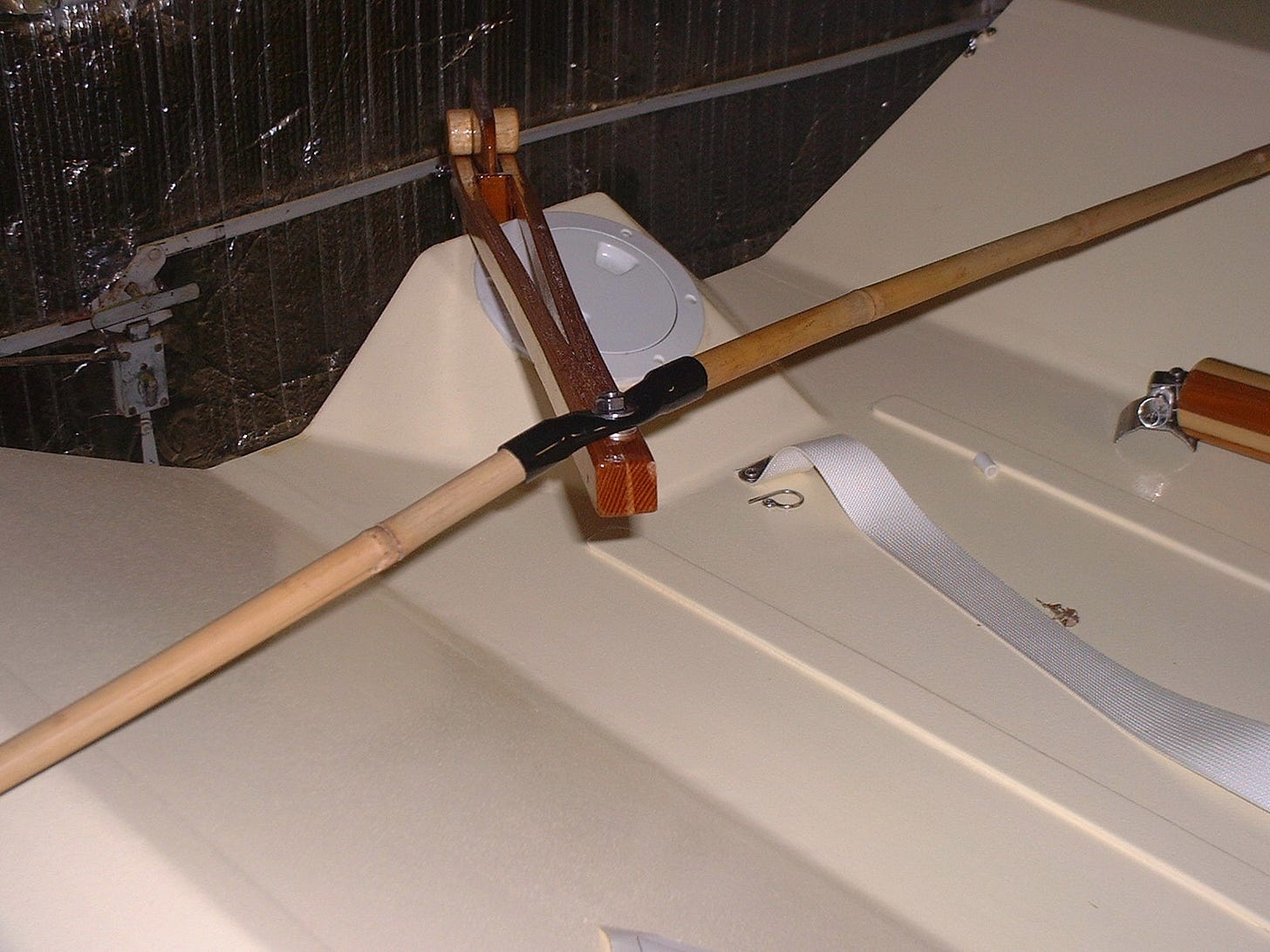Would you believe we received more tiller extension ideas?
Regular contributor, Paul Stovner sent this one:
My Tiller extension if made of an aluminum hiking (Ski) pole. I cut off and discarded the 3rd skinniest section (basket end) and inserted a slightly undersized wooden dowel covered with thickened epoxy. This strengthened the end up so I could drill through it and bolt it to a swivel made of this purpose (sold on Duckworks). The “free” end, with the handle, is then secured back on the tiller with a piece of Velcro when not in use. By using an old hiking pole, the extension can be varied in length as needed.
This worked great but there are times when I want to stand forward in the boat, while sailing—like when I am adjusting the sail, or I’ve been sailing for four hours and just need to stand for a while. I wanted a way to make the normal pivoting extension a fixed extension of the handle. This would allow me to steer with the tiller between my knees while standing forward, and working with my hands. I’m trying to convince you I can do two things at once—not well, but I can. To solve the problem I made a removable “slot” that can be clamped onto the end of the tiller handle.
My tiller handle is a squarish type making the mod easier. This could also be done with a round handle but might require more work. The “slot” is just two pieces of stiff material like hardwood, or, like mine, from old broken battens, (you did keep those in case you ever needed to use them?). I cut the batten to about 4-¼” long by 1-¼” wide to fit my tiller. A block of wood is cut/sanded down so it is about 1/32” wider than the tiller handle, (in my case about ¾”). The blocks other dimensions were ¾” tall by 1-¼” long. This is bolted or screwed at the bottom of the 2 pieces of batten. Next, I through drilled a ¼” hole, through both batten pieces, so that it is about 1” up from the top of the tiller handle when it is resting on the block. A ¼-20 bolt and corresponding wing nut is then placed through this hole and used as a tensioner to clamp the “slot” to the handle. About 1-¼“of batten material should now remain above the tensioning bolt.
When in use the tiller extension rests in the “slot” between the two pieces of batten, and gravity holds it there. If I need to make a sudden sharp turn, I can raise the extension out of the slot and use it as normal, as long as I hold it up at a bit of an angle. When I’m done having to stand and steer the “slot” is removed and stored.
Designer Dudley Dix writes:
The simplest tiller extension is what I have on both my boats. A length of bamboo from any garden supplier, with a short length of flexible plastic tube with one end fitted over the bamboo and held with a small screw, the other end drilled for a bolt through the tiller. The attached photo shows my dual extensions from the Paper Jet, the two extensions on a single plastic tube and bolt. The plastic tube is flexible enough for the lazy tiller to trail unaffected by the active extension.
•SCA•







